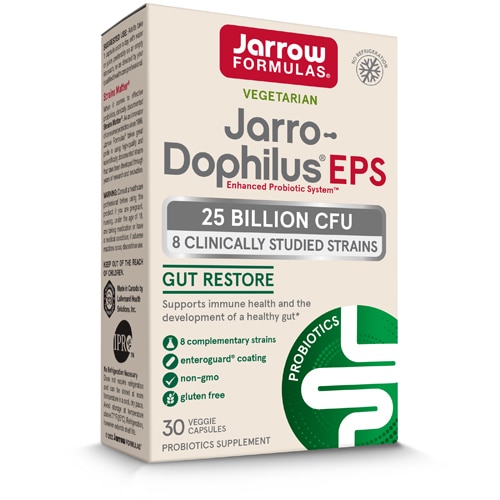[vc_row][vc_column][vc_column_text]Due to being similar sounding, it’s common to confuse the terms diverticulitis, diverticulosis and diverticular disease. Though they only vary by four letters, these terms differ a lot, and it is common for people to receive outdated nutrition advice about them. Let’s set the record straight and dish out nutrition need-to-knows.

Diverticulosis vs diverticulitis (plus, diverticular disease)
These three different terms can be thought of as three different phases. According to the
National Institute of Diabetes and Digestive and Kidney Diseases (NIDDK),
diverticulosis is common and occurs when small pouches form in the colon wall, where stool is formed. Up to 95% of people may never develop problems or symptoms from these. If a person has these pouches but has mild to no symptoms, they are in the
diverticulosis phase.
However, if one of those pouches becomes inflamed, it is now called
diverticulitis. This phase is painful and often happens quickly. It can lead to serious problems and infection. People often have many symptoms during this phase and need medical help.
If a person gets symptoms or flare-ups, it is called
diverticular disease.
What to eat with diverticulosis
Whether a person is in the diverticulitis (active flare-up) or diverticulosis phase (no symptoms), will determine the nutrition advice, which differs. Nutrition for diverticulosis centers around prevention and a balanced diet.
According to NIDDK and the
American Gastroenterological Association (AGA), diets low in fiber and high in added sugar and red meat may increase the risk of diverticular disease. It may help to eat to prevent constipation and a less processed, more anti-inflammatory or vegetarian diet.
Thus, aim for plenty of fluids, whole grains, fruits and vegetables. Vary protein intake by choosing plant-based proteins such as
beans,
nuts,
seeds and
tofu more often in place of meat. When animal proteins are eaten, aim for lean white meats (chicken and turkey) and seafood when possible.
The tips in this phase apply to most people recently healed from diverticulitis and those with no symptoms or history of flare-ups.
Sample Meal Plan for Diverticulosis
Breakfast
Oatmeal, low-fat milk, berries, walnuts, 1-2 tsp. sweetener of choice
Lunch
Quinoa, chickpeas, peppers, cucumber, feta cheese, lemon juice/olive oil herbs for flavor
Dinner
Whole wheat pasta, shrimp, marinara sauce, spinach
Snacks
Greek yogurt, fruit, nuts
What to eat with diverticulitis
The nutrition advice for diverticulitis is opposite. During this phase, the colon is sensitive and not working well. Food should be gentle on the colon and easy to digest to lessen symptoms and allow it to heal. What to eat for diverticulitis depends on the severity of the flare. A person’s diet could vary from any one of these stages and should be guided by a health expert:
- Total bowel rest: No food or drink at all
- Clear liquid diet
- Pureed diet or liquid supplements
- Low fiber diet: Low fiber, soft foods such as white bread, white rice or pasta, and mashed potatoes without skin. Only fruit and vegetables that are soft, cooked or canned without tough skins or seeds. Proteins should be soft such as eggs, ground meats, tofu and fish. Avoid tough meats, beans, peas, high fiber foods, whole grains, raw vegetables, corn, nuts, seeds and other tough or hard to digest foods.
A registered dietitian can help plan meals and slowly progress to get to the high fiber, diverticulosis nutrition recommendations once healed.
Sample Meal Plan for Diverticulitis
Breakfast
Cream of wheat, white toast, small amount of margarine, scrambled eggs
Lunch
White bread, tuna with mayonnaise, chicken noodle soup, no-pulp juice
Dinner
Tender white meat, white rice, canned green beans, no-pulp juice
Snacks
Low-fiber supplement shake, Saltine crackers, cheese
Diverticulosis vs diverticulitis: Should certain foods be avoided?
Registered dietitians often find people are given out of date advice about diverticulosis. Many people have been told to avoid nuts and seeds, including popcorn, corn, tomatoes, berries or any other foods with small, hard parts that can’t be fully chewed or digested. This is due to the theory that those hard parts will get stuck in the pouches and cause diverticulitis.
However, this has been debunked.
Research shows no link with these foods and diverticulitis. In fact, these foods are often higher in fiber and nutrients, which may reduce the risk of diverticulitis. However, during a diverticulitis flare, those foods, along with other tough high fiber foods, are not recommended. Once healed, there is no need to avoid for most people. It is important to progress to a high fiber diet. Be sure to talk to a health care provider about your individual needs.
A
more plant based, low added sugar and minimally processed diet may help prevent diverticular problems and is encouraged. However, dietitians advocate that all types of foods can be enjoyed in a healthy diet, even less nutritious ones. There is no need to avoid any foods unless there is a medical reason to do so. Aim for more wholesome options when able.
In summary
Whether a person has diverticulosis or diverticulitis, a registered dietitian can help tailor recommendations to a person’s unique needs and medical condition, since different people can have different needs.
While people often like to think
nutrition can cause or prevent anything, this is not necessarily true. The tips about what to eat with diverticulitis and diverticulosis are one factor that can help. Genetics, physical activity, smoking, aging, other medical conditions and some medications are other factors that greatly impact a person’s risk.
Schedule an appointment with a Kroger Health Registered Dietitian, our nutrition experts, to discover realistic, personalized, nutrition recommendations.
[/vc_column_text][/vc_column][/vc_row][vc_row][vc_column][vc_text_separator title="Featured Products" border_width="2"][vc_row_inner equal_height="yes" content_placement="middle" gap="35"][vc_column_inner width="1/3"][vc_single_image image="176624" img_size="full" alignment="center" onclick="custom_link" img_link_target="_blank" css=".vc_custom_1721488881788{padding-right: 7% !important;padding-left: 7% !important;}" link="https://www.vitacost.com/amy-myers-md-leaky-gut-revive-strawberry-lemonade"][/vc_column_inner][vc_column_inner width="1/3"][vc_single_image image="176625" img_size="full" alignment="center" onclick="custom_link" img_link_target="_blank" css=".vc_custom_1721488895388{padding-right: 7% !important;padding-left: 7% !important;}" link="https://www.vitacost.com/nouri-digestive-health-probiotic-and-omega"][/vc_column_inner][vc_column_inner width="1/3"][vc_single_image image="176626" img_size="full" alignment="center" onclick="custom_link" img_link_target="_blank" css=".vc_custom_1721488908729{padding-right: 7% !important;padding-left: 7% !important;}" link="https://www.vitacost.com/solaray-gutshield-pure-powder-unflavored"][/vc_column_inner][/vc_row_inner][/vc_column][/vc_row]




